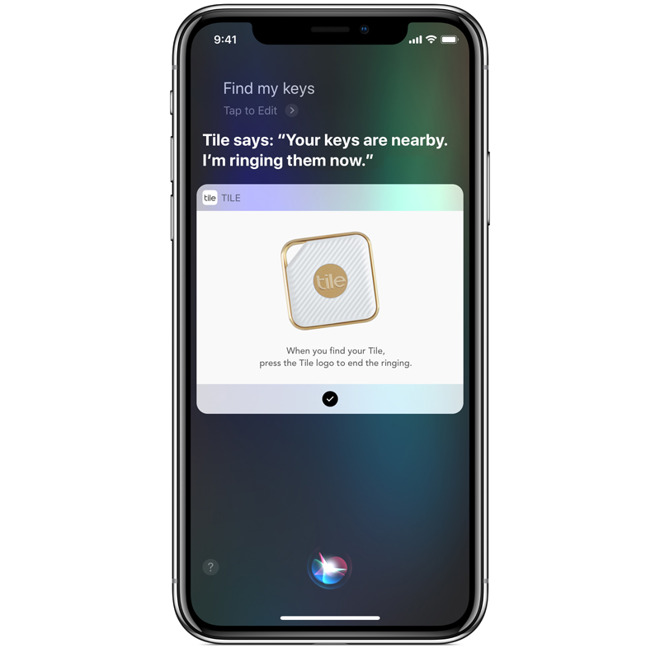Apple said to be unifying Find My Friends & Find My iPhone, developing Tile-style tracker
Apple is reportedly working to merge Find My Friends and Find My iPhone into a single app, and even compete with Tile by launching a new object-tracking tag.

The combined app should be based on Marzipan -- letting it work on both iOS and macOS -- and share the same features as its predecessors. It's also expected incorporate a new "Find Network" feature however, similar to Tile's Bluetooth-based tracking system. This would let people follow Apple hardware without Wi-Fi or even a cellular connection.
The Tile parallels may be very direct, as Apple is allegedly interested in tracking non-Apple devices as well by way of a "tag" product with the codename "B389." This could be attached to any item, and linked to a person's iCloud account by holding it next to an iPhone. This would then trigger notifications when the tag gets too far from the iPhone, with optional geofences so an item can be left in place, and the ability to share object locations with others.
Tags should moreover include contact information, such that when marked as lost and scanned by another Apple device, the original owner will receive an alert.
The claims stem from anonymous development sources cited by 9to5Mac.
Apple and Tile have become relatively close partners. Most famously Tile was one of the first companies to support Siri Shortcuts in iOS 12, for instance letting people say "find my keys" or "find my scooter" to make a tracker ring.
It's unknown if Apple plans to license Tile's technology to avoid any potential lawsuits. Theoretically Apple could simply buy Tile outright, much like it bought Beddit to acquire its sleep-monitoring technology.

The combined app should be based on Marzipan -- letting it work on both iOS and macOS -- and share the same features as its predecessors. It's also expected incorporate a new "Find Network" feature however, similar to Tile's Bluetooth-based tracking system. This would let people follow Apple hardware without Wi-Fi or even a cellular connection.
The Tile parallels may be very direct, as Apple is allegedly interested in tracking non-Apple devices as well by way of a "tag" product with the codename "B389." This could be attached to any item, and linked to a person's iCloud account by holding it next to an iPhone. This would then trigger notifications when the tag gets too far from the iPhone, with optional geofences so an item can be left in place, and the ability to share object locations with others.
Tags should moreover include contact information, such that when marked as lost and scanned by another Apple device, the original owner will receive an alert.
The claims stem from anonymous development sources cited by 9to5Mac.
Apple and Tile have become relatively close partners. Most famously Tile was one of the first companies to support Siri Shortcuts in iOS 12, for instance letting people say "find my keys" or "find my scooter" to make a tracker ring.
It's unknown if Apple plans to license Tile's technology to avoid any potential lawsuits. Theoretically Apple could simply buy Tile outright, much like it bought Beddit to acquire its sleep-monitoring technology.

Comments
I'd even be OK with devices to be placed around the house and yard so that the BT signal could be received by them and a much better distance map created than what is currently offered by iBeacons.
Why would you jack a new thread about an unrelated feature and product to say this?
I too tried a BT tracker system. It was a complete mess, and I simply threw it out after a couple weeks of false alarms, non-functionality. I've seen Tile sales, and given the limitations of BT I've decided to pass. Unlikely any wifi, gps, or LTE function can work given the power requirements. Neat idea, but my expectations are low.
https://patents.justia.com/assignee/tile-inc ;
Apple may license Tile technology but it's unclear if Tile's patents would withstand prior art challenges.
Also it should be integrated in Settings, instead of an app. Settings->My Devices.
Similarly there needs to be access through MacOS settings, instead of having to go to iCloud.com, which is a royal pain in the buttocks.